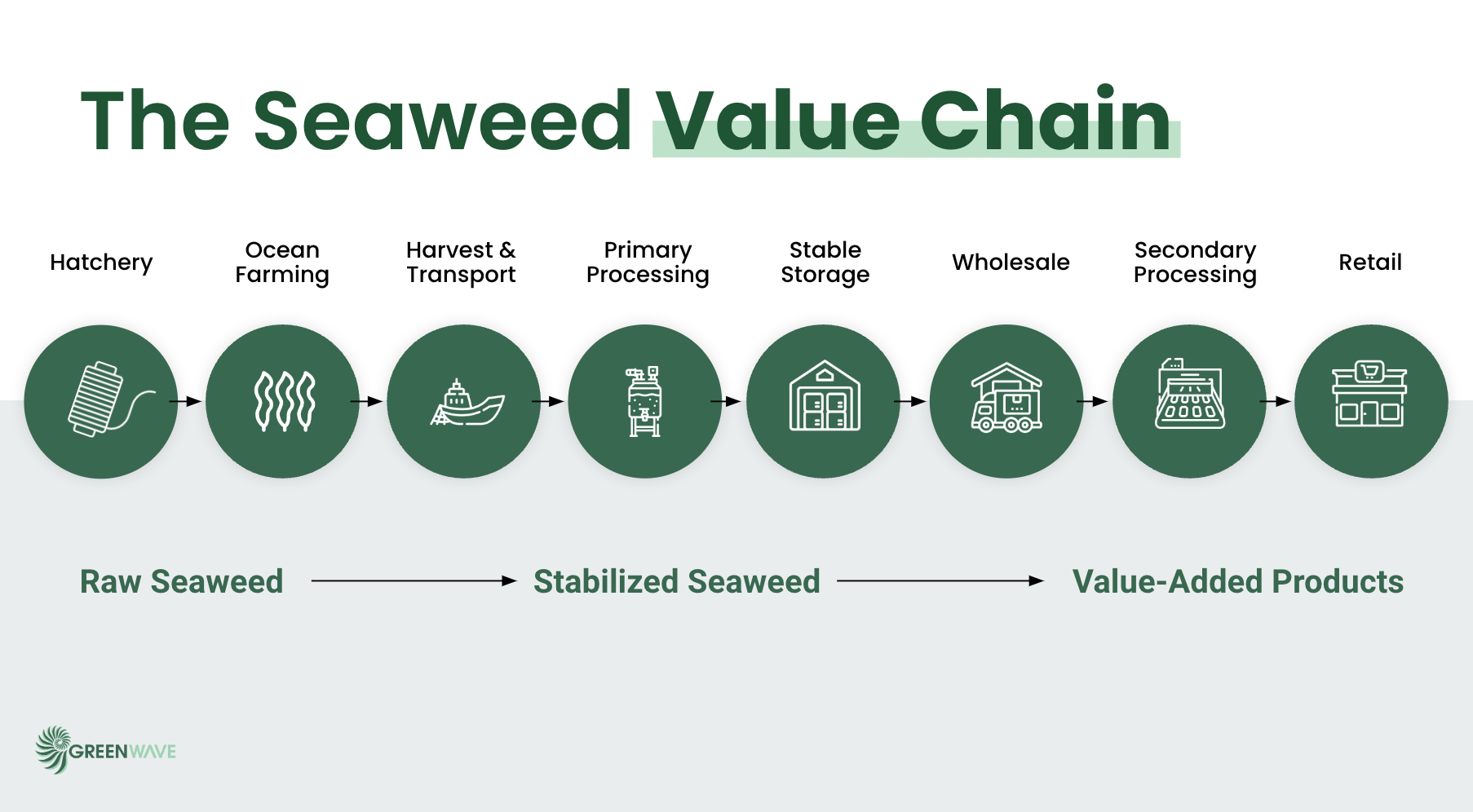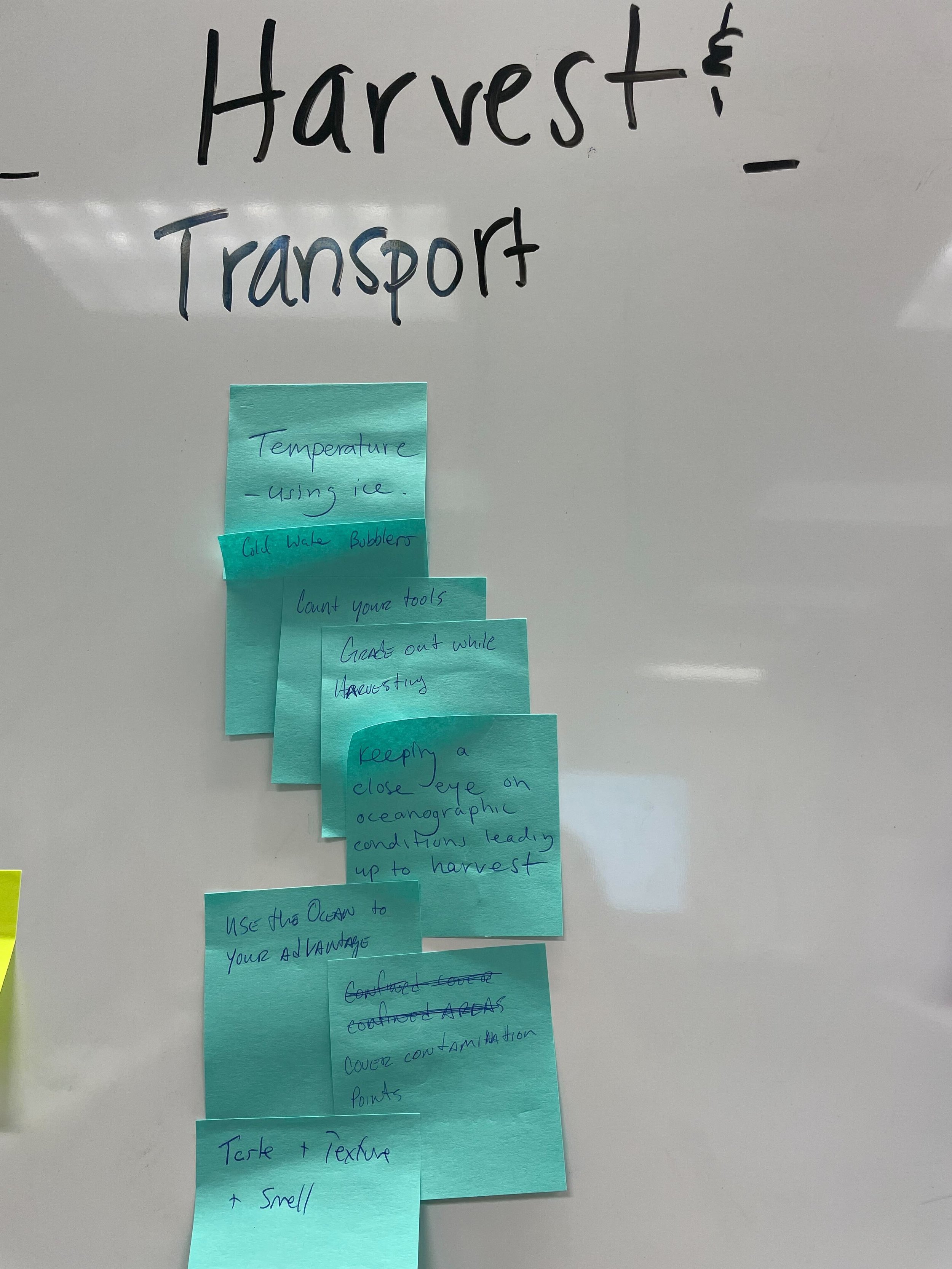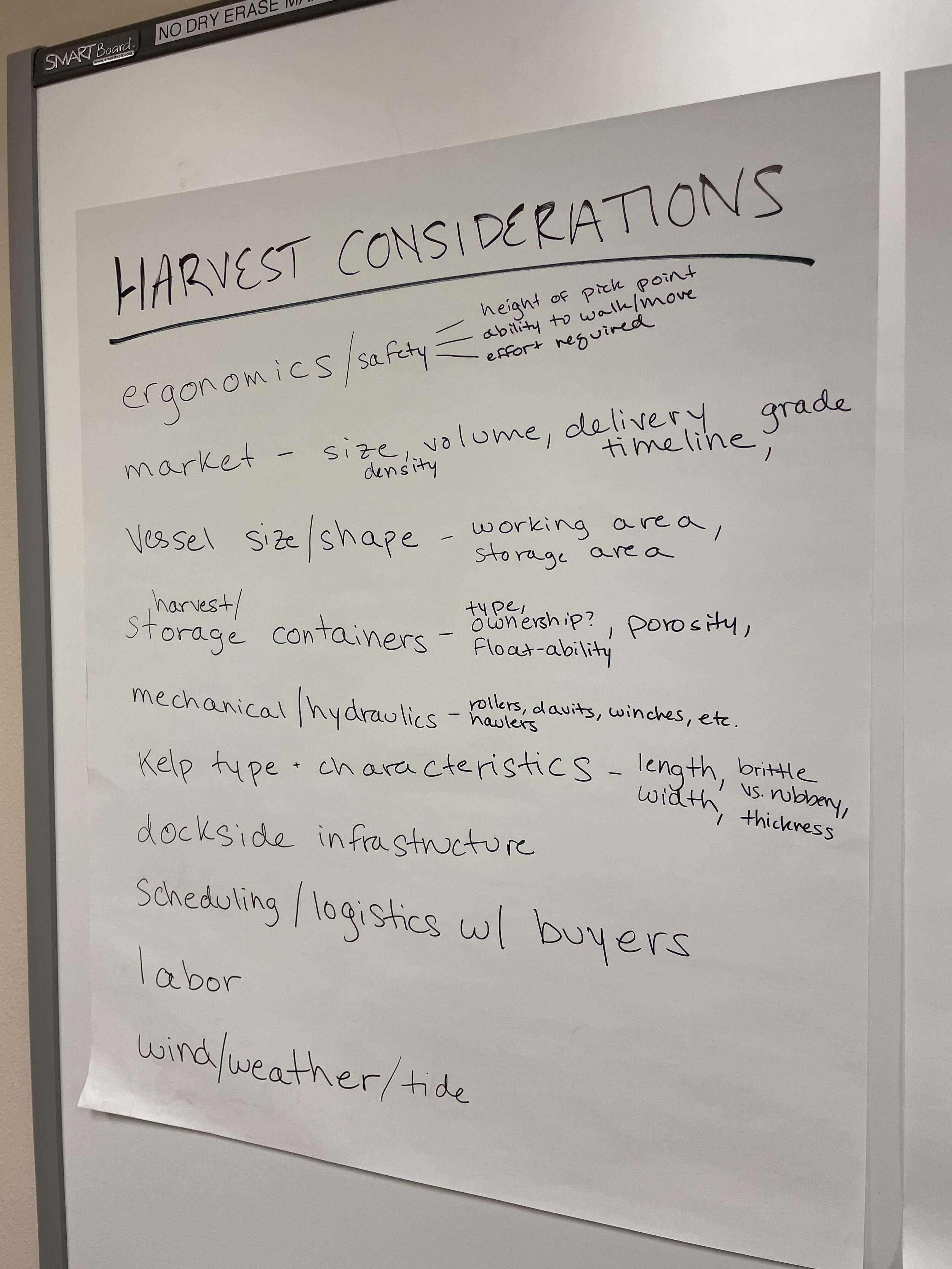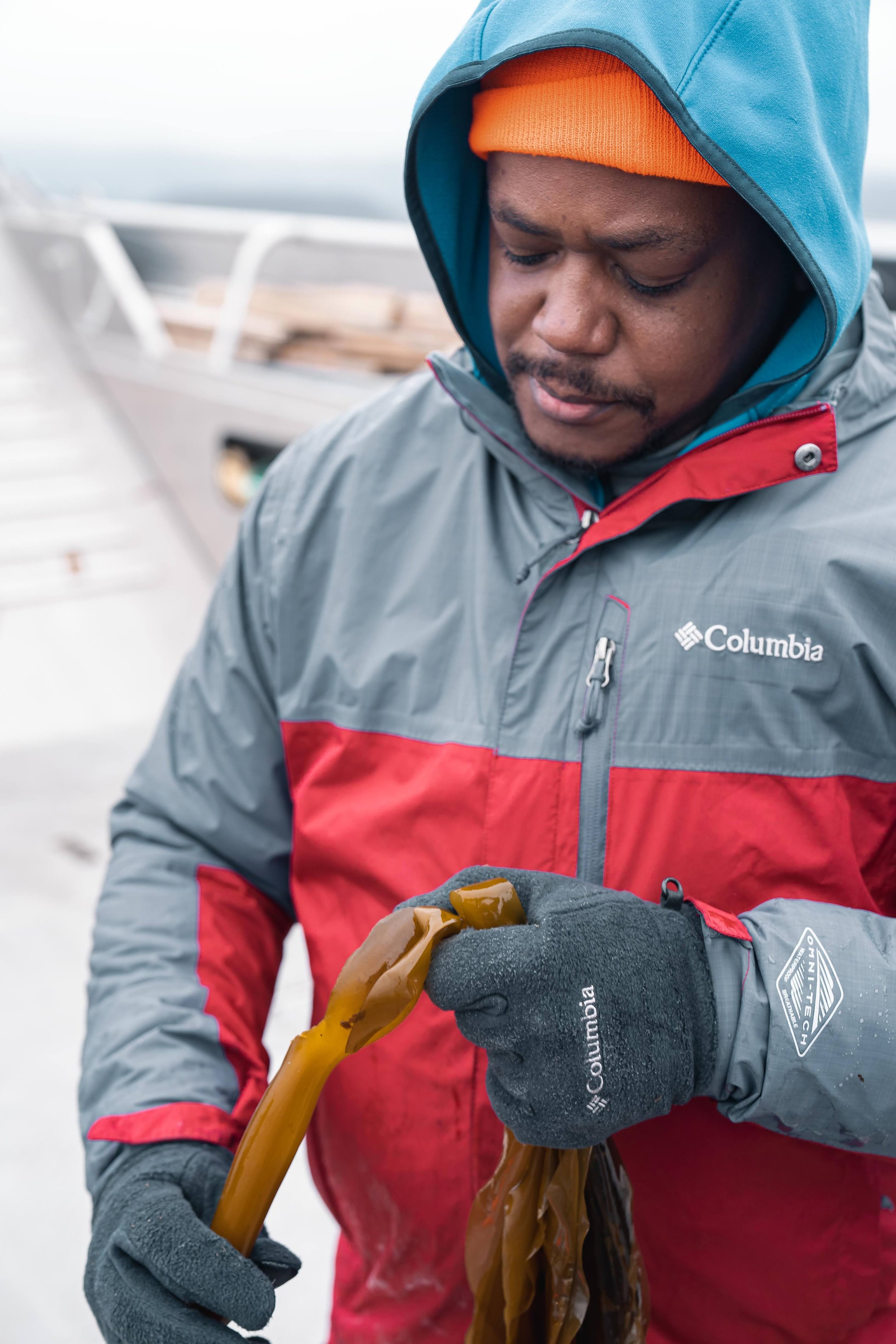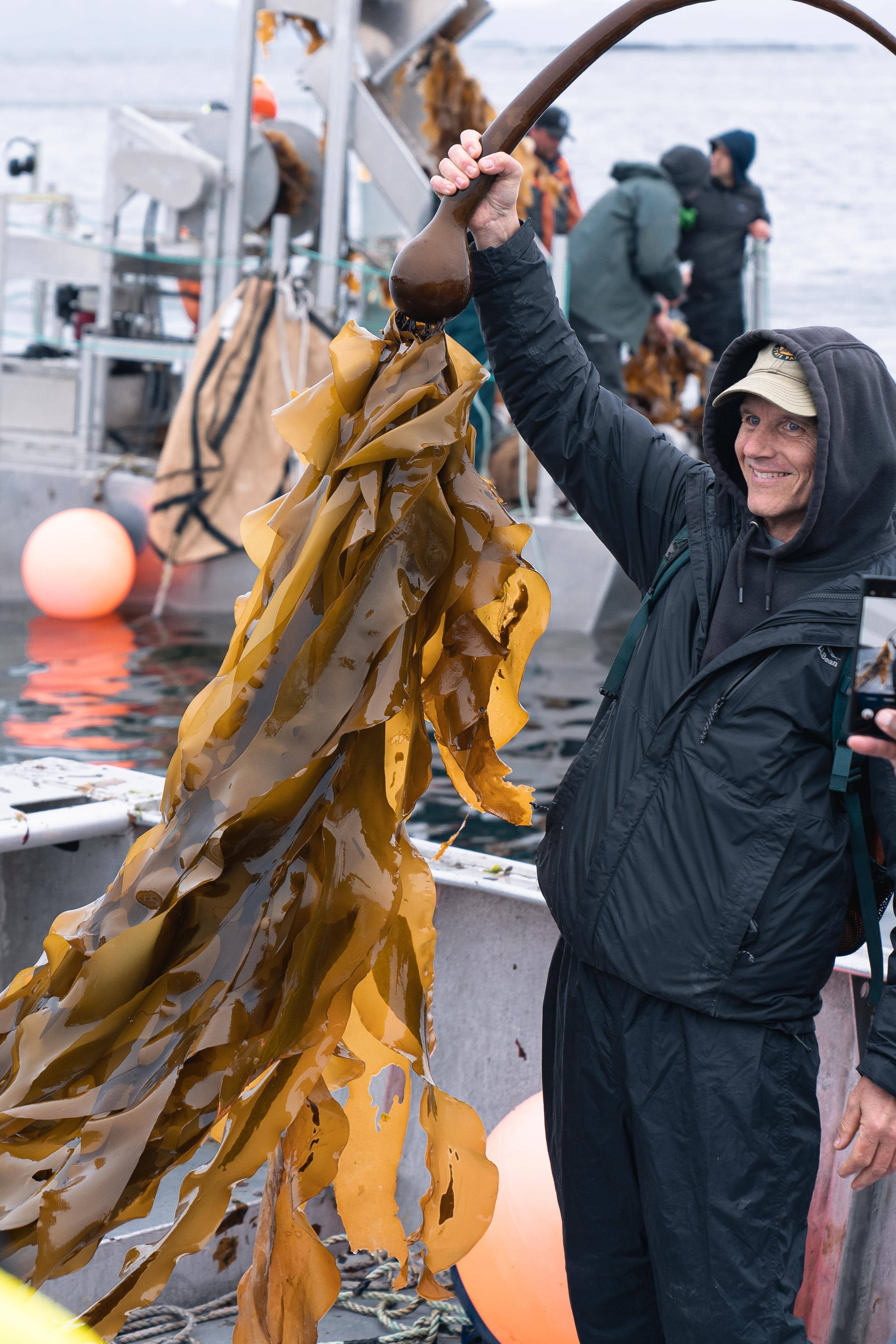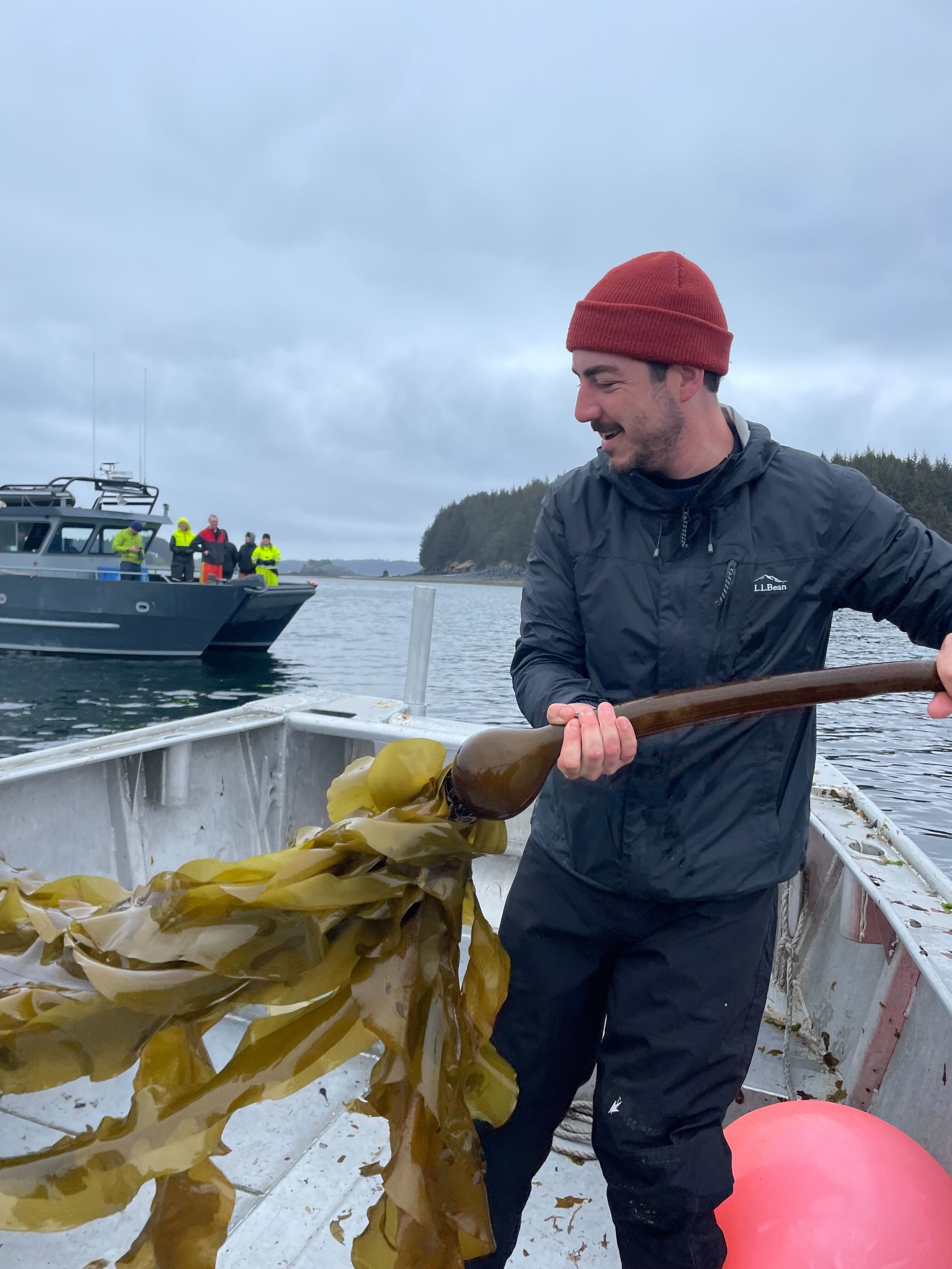Advanced Farmer Training: Hands-on Kelp Harvest, Co-ops, & Buyer Relationships
Farmer-to-farmer connectivity is core to GreenWave’s training programs. Collaboration, not competition, accelerates learning and spurs innovation and adoption of new practices. In addition to supporting community building through our online Ocean Farming Hub, GreenWave organizes in-person opportunities for farmers to connect and engage in bicoastal farmer collaborations.
Earlier this month, 16 farmers from across the country participated in GreenWave’s Harvesting Value workshop in Kodiak, Alaska. This 3-day training covered an assortment of topics including a showcase of locally-developed advanced harvest technology to improve harvest efficiency, discussions on quality control, seaweed buyer relationships and sourcing needs, cooperative structures, and more.
“Advanced farmer trainings provide an opportunity for peer-to-peer support and collaboration for farmers who are leading this rapidly growing industry,” says GreenWave Director of Training & Support Lindsay Olsen. “This is the first time a bicoastal group of kelp farmers came together to discuss their agency, influence, and responsibility within the seaweed value chain. The conversations were powerful.”
On day one, training kicked off with a presentation and discussion about regional harvesting setups, techniques, and challenges. Participating farmers shared tips and technical questions.
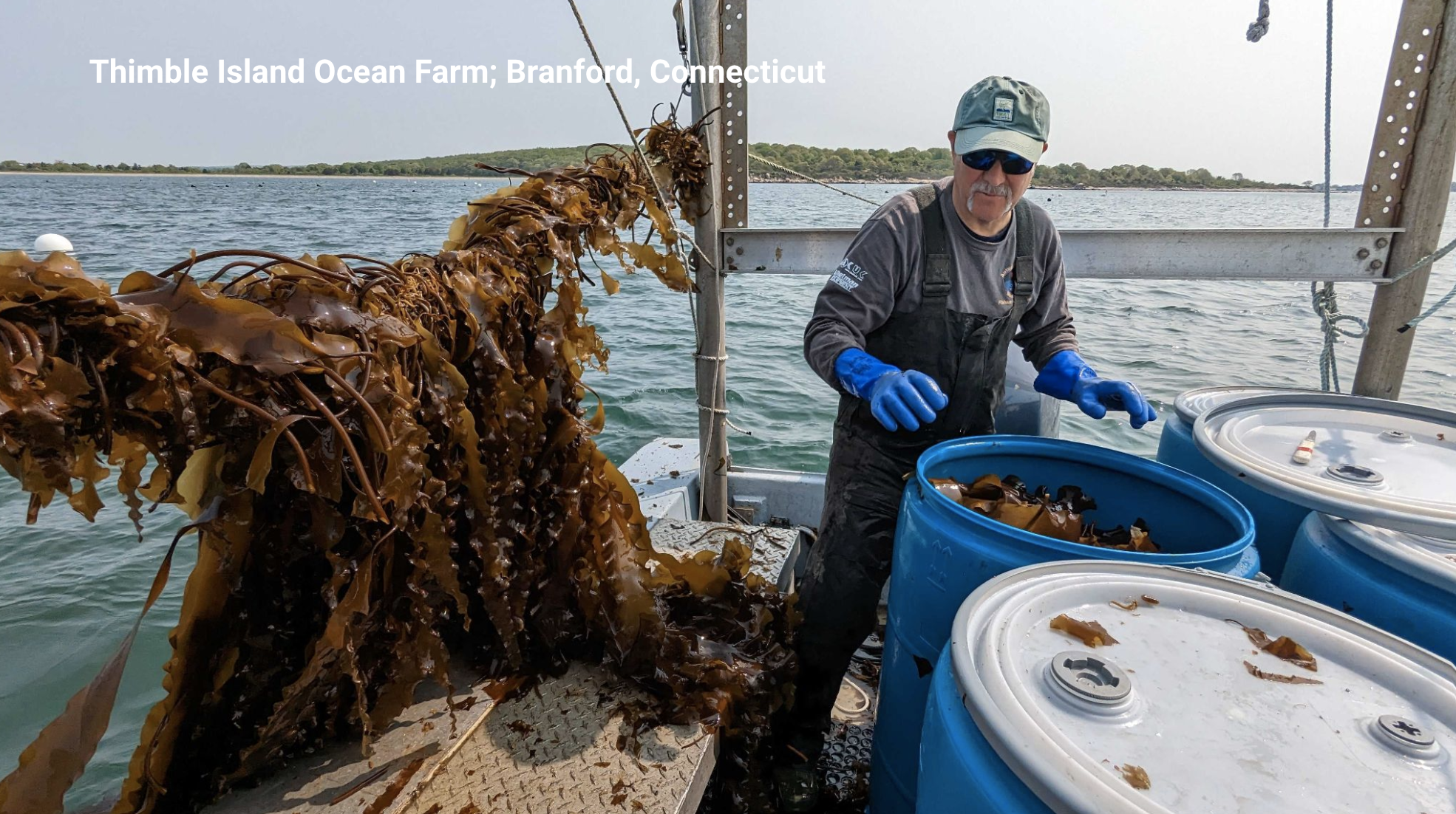
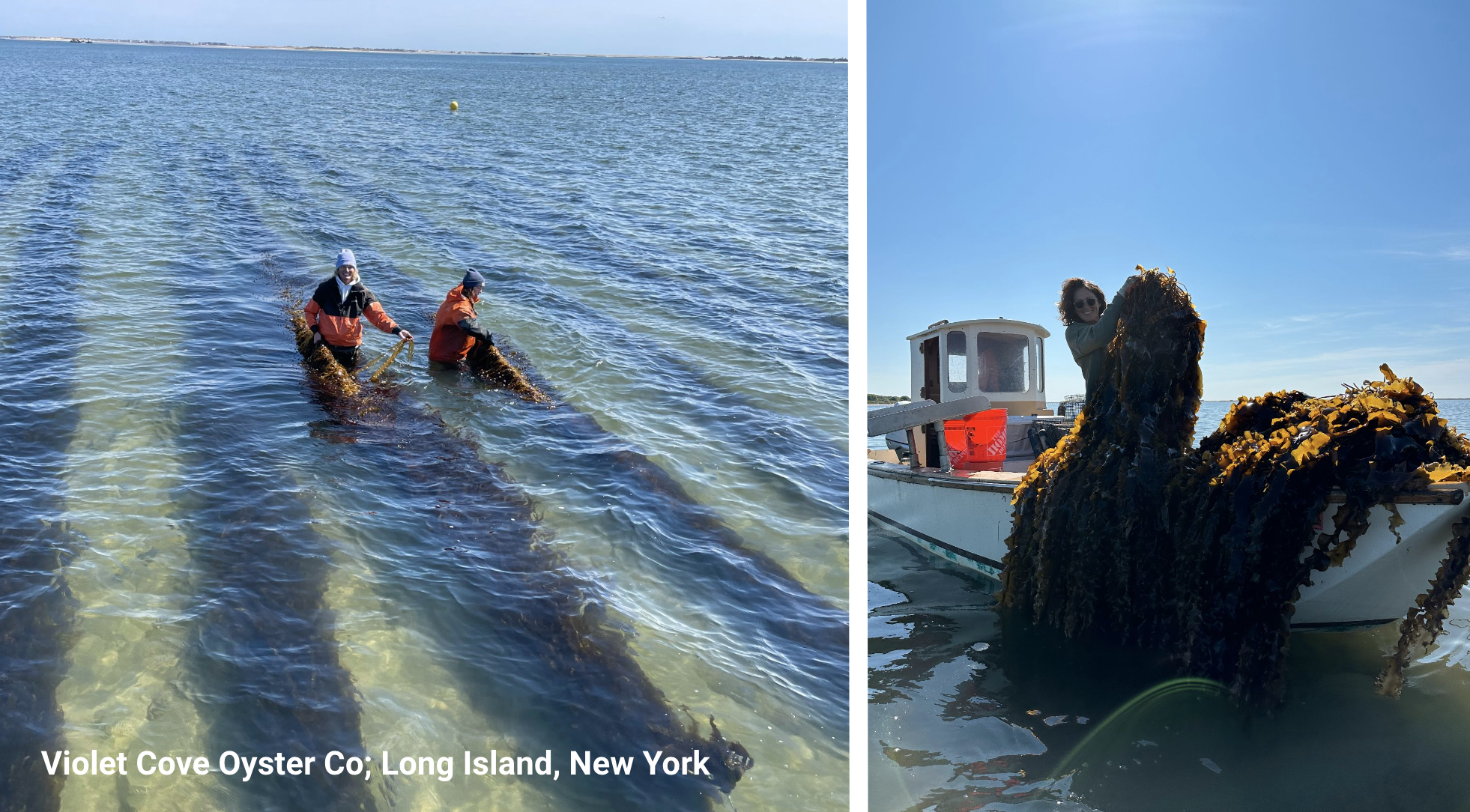
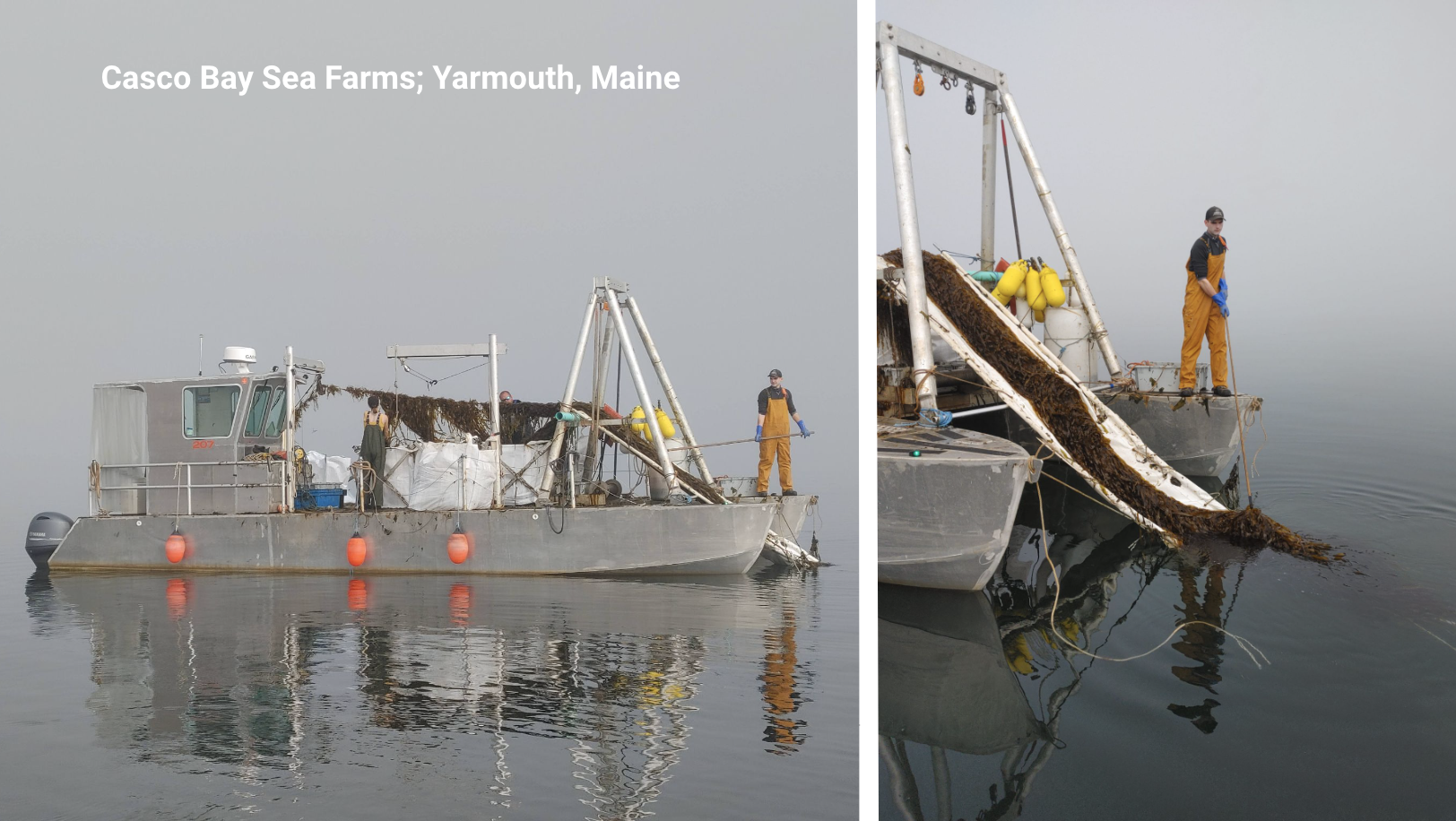
Kodiak-based fishermen and ocean farmers Alf Pryor and Nick Mangini presented on harvesting at scale. They shared an overview of the catenary array design–a grid-like system that uses large anchors to secure the corners of a matrix of closely spaced growlines–and the harvest technology that has been optimized for this design.
Farmers jumped into a series of market development topics to understand opportunities to create and maintain value for their crop. Participants discussed best practices for quality control and farmer and buyer standards across the supply chain. “On-farm decisions impact value in the marketplace,” says GreenWave Director of Market Development Sam Garwin. “The technical side of seaweed harvest is intrinsically linked with the end product and each step in the value chain, so it’s important for farmers to share common language and standards to capture the full value of their work.”
On day two, farmers headed out to Nick and Alf’s farms for a harvest demo. They hopped aboard the Harvest Buddy, an aluminum barge outfitted with a hydraulically-powered reel, mechanized cutting system, and bag dump designed to efficiently harvest kelp grown on a catenary array. The Harvest Buddy can harvest at speeds upwards of 6,000 lbs/hr.
While Nick and Alf manage larger operations than most farmers across the country, the tour of Harvest Buddy offered the opportunity for farmers to take away lessons on the importance of integrating farm design with harvest technology to achieve peak efficiency.
Farmers gained technical insight into the catenary farm setup and design, discussing anchoring, connection points, tensioning, and floatation.
They also toured an experimental farm design growing a mix of bull kelp and sugar kelp. Optimizing the cultivation of bull kelp–a fast-growing, floating species native to the West Coast–is a hot topic for Alaskan farmers who are working to increase species diversity and access new markets.
On day three, farmers convened back in the classroom to discuss dynamics between seaweed farmers, processors, and buyers; identify gaps within the existing value chain; and map out ways to solve these challenges.
In response to growing interest from farmers, GreenWave brought in Travis Fogues–dairy farmer and Executive Vice President of Membership at Organic Valley–to share his experience as a farmer-member turned cooperative employee of the nation’s largest farmer-owned organic cooperative. Co-ops provide opportunities for groups of farmers to work together to share infrastructure costs to have more stake in the supply chain. “Travis’s session gave insight into real-world applications of big-picture concepts,” says Sam. “This helps farmers think creatively about how and why they might adopt cooperative or other alternative structures to secure more market power.”
“The goal of our co-op is to ensure farmers have a stable price and a seat at the table when deciding their destiny," Travis told the farmers. “It’s not an ‘us’ versus ‘them’ with processors–we are all in this together.”
Farmers often operate in isolation. One farmer commented, “Being here over the last two days I’ve learned more than what we’ve been searching for in the past three years. It’s those simple conversations that lead to the most learning.”
In-person opportunities are invaluable for farmers at all experience levels, helping them to establish regional and national networks of support to shorten the learning curve and improve operations on their own farms, as well as work to collectively define industry standards and best practices.
Robust farmer relationships are critical to constructing a resilient industry from the bottom up. GreenWave will continue these conversations at the second-annual Farmer-only Meet & Greet in conjunction with the upcoming Seagriculture conference in Portland, Maine this September.
